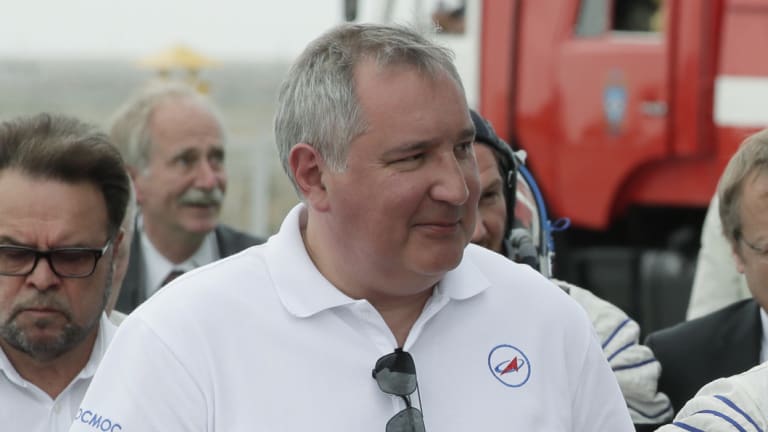Sabotage on the International Space Station? Some in Russia think so
By Kennth Chang
The Sydney Morning Herald
New York: Amid wild rumours in Russia that a NASA astronaut deliberately drilled a hole in a Russian spacecraft docked to the International Space Station, the space agencies of the two countries released a joint statement Thursday saying a leak last month was being investigated and that they would refrain from further comment.
The leak, which was less than 2.5 millimetres wide, was first detected on August 29. It posed no immediate threat to the crew aboard the station, and Russian astronauts quickly patched with tape by Russian astronauts.

The Russian Soyuz crew craft, left, and the Northrop Grumman Cygnus space freighter are attached to the International Space Station. The small leak is on the capsule at left. Photo: NASA
But the stories in Russian news media and statements by Dmitry Rogozin, general director of the space agency Roscomos, seemed to suggest a need to reaffirm cooperation between Earth’s most active space-faring powers, who jointly manage the orbiting station.
Initially, officials suggested that a micrometeorite had pierced the spacecraft. But last week, Rogozin raised the possibility of sabotage.
In a Russian television report, Rogozin said the micrometeorite theory had been ruled out, because the hole appeared to have originated from the inside. According to a translation of the remarks by the Interfax news agency, Rogozin said, “What was it: a defect or some intentional acts? Where were these acts carried out? On the Earth or already on the orbit? Yet again, I am saying: we are not dismissing anything.”
In recent days, articles in Russian publications speculated that someone from NASA had deliberately punctured a Russian transport capsule, called a Soyuz, docked with the station.

Roscosmos state space corporation head Dmitry Rogozin. Photo: AP
According to the report, the Russian investigators suspect that a NASA astronaut had fallen ill. To take one sick crew member back to Earth, three of the six astronauts on the station would have to leave in the Soyuz. But perhaps NASA did not want to pay the cost of a new Soyuz launch, the report said, and so someone on the crew resorted to sabotage to force an evacuation. (The hole was in the upper section of the spacecraft that is discarded before re-entry into the atmosphere so there would be no danger to the astronauts.)
An article in the newspaper Kommersant noted that the Soyuz is close to the American portion of the station. The newspaper said Roscosmos has asked for medical records and video recordings that would show the movements and health of the NASA astronauts and that NASA was unlikely to comply to preserve the astronauts’ privacy.
The statement said that Jim Bridenstine, the NASA administrator, and Rogozin had spoken, by telephone, to discuss the space station leak.
“The Administrator and the General Director noted speculations circulating in the media regarding the possible cause of the incident and agreed on deferring any preliminary conclusions and providing any explanations until the final investigation has been completed,” the statement said.
The statement went on to say that Bridenstine and Rogozin “acknowledged the entire crew is dedicated to the safe operation of the station and all docked spacecraft to ensure mission success.”
It was the first time the two had spoken since Bridenstine’s confirmation in April, which faced a lengthy delay in the Senate.
Even during the Cold War, the United States and the Soviet Union collaborated in space, beginning with a docking of a Soyuz and Apollo spacecraft in 1975. In 1993, the United States invited Russia to join the space station effort, and after the retirement of the space shuttles in 2011, NASA has relied on Russia to take its astronauts to and from the station. That has been lucrative for the Russian space industry; each Soyuz seat currently costs more than $80 million.
But NASA is not buying any more seats. Next year, after years of delays, Boeing and SpaceX are to take over that role.
